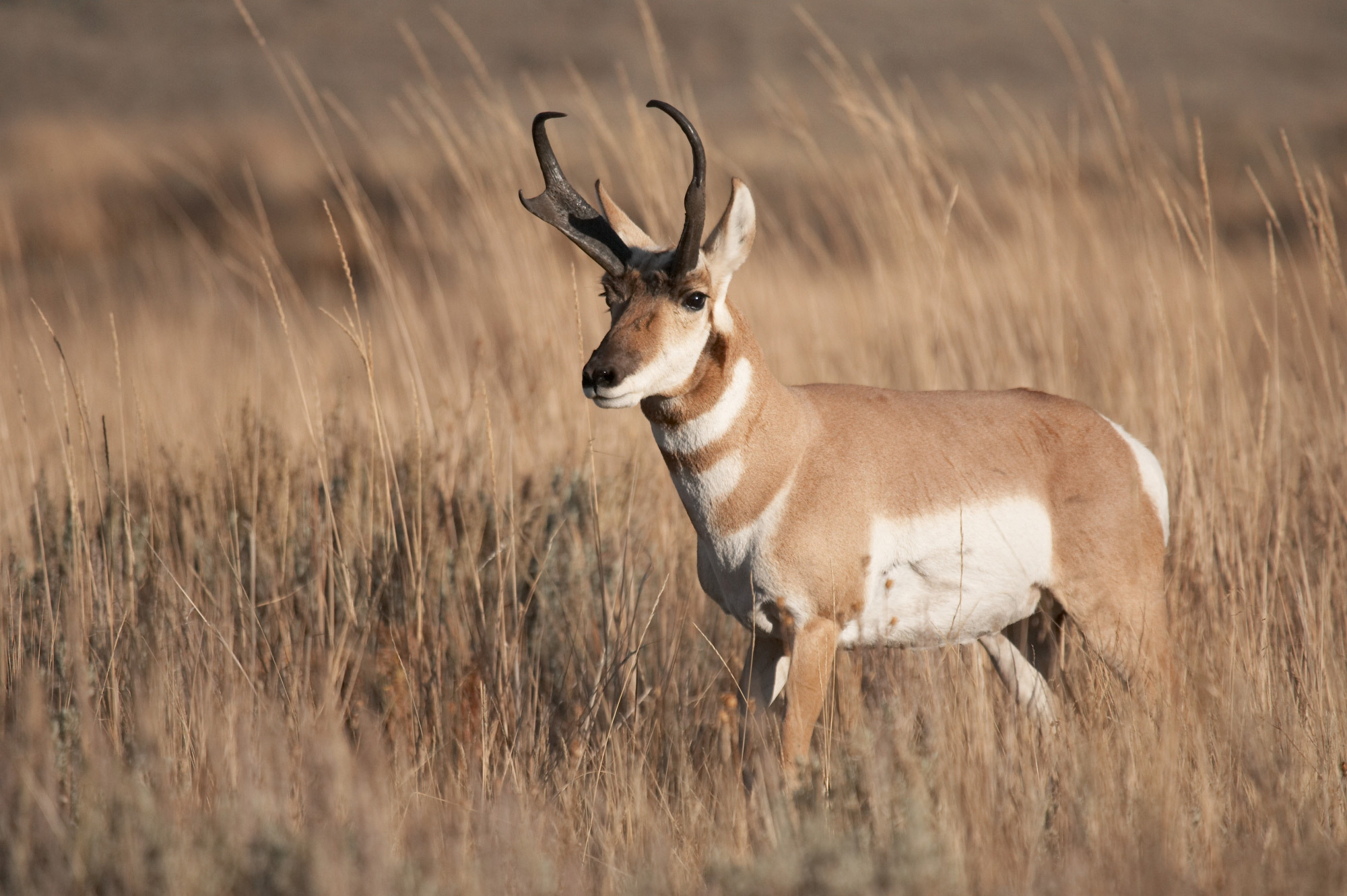Pronghorn
The Pronghorn, often mistakenly referred to as an "antelope," is a unique ungulate native to North America. Boasting impressive speed and distinctively shaped horns, the Pronghorn is a vital component of Alberta's wildlife, gracing its grasslands and shaping its ecological narrative.

More on Pronghorn
About
The Pronghorn is the sole surviving member of the Antilocapridae family and is endemic to North America. Distinguished by its tan-coloured fur with white patches, this animal has a set of branched, backward-curving horns, from which it gets its name. It's famed for its speed, being the second-fastest land animal after the cheetah, and can sustain high speeds for longer distances. While pronghorns are found in various regions of North America, in Alberta, they are primarily seen in the southern grasslands and parklands.
History
Historically, pronghorns have roamed vast expanses of North America. For many Indigenous communities in Alberta, the Pronghorn has held, and continues to hold, cultural significance. They were, and to some extent still are, hunted for their meat, hides, and horns. With European colonization and the subsequent habitat changes, pronghorn populations faced declines. However, conservation efforts in Alberta and other parts of their range have aided in their recovery.
Ways To Cook
Pronghorn meat is lean and has a delicate, gamey flavour that's less intense than deer or elk. It's rich in protein and low in fat, making it a healthy choice for those who have access to it. The meat can be grilled, roasted, or stewed. In Alberta, some might prepare pronghorn steaks similarly to beef or venison, seasoned simply with salt, pepper, and local herbs, then grilled or pan-seared. Its lean nature means it's best when cooked to medium-rare to maintain tenderness. Ground pronghorn can be used in burgers, meatballs, or sausages. As with most game meats, marinating pronghorn can enhance its flavour and tenderness, with ingredients like juniper berries, rosemary, or red wine being popular choices in various recipes.
